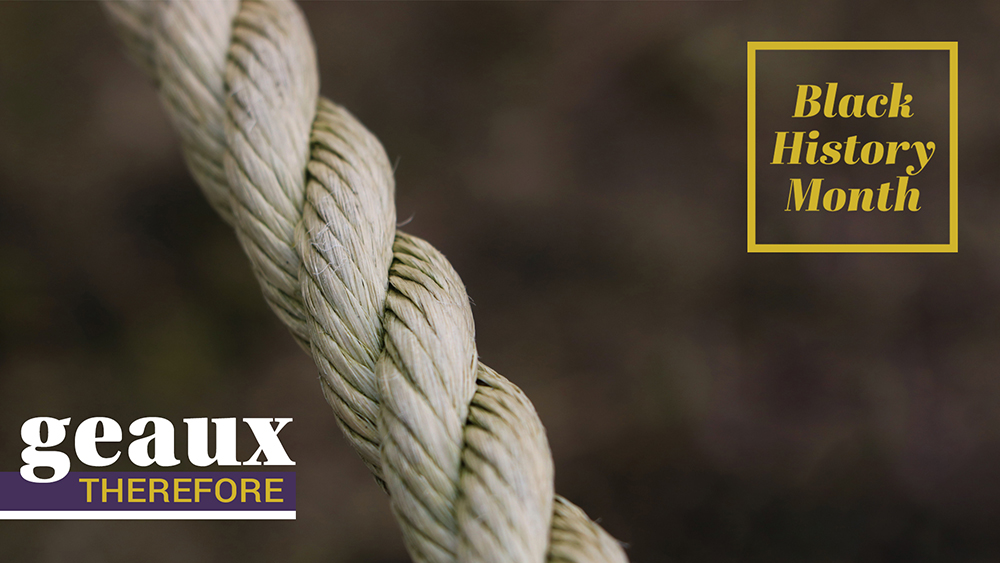
William Franklin Graham Jr. did the unthinkable at the 1952 Jackson, Mississippi crusade when he removed the red segregation rope that separated black and white worshippers.[1]
Born November 7, 1918 near Charlotte, North Carolina, William Franklin Graham Jr. gave little indication that he would one day preach the Gospel to as many as 250 million people in over 185 countries.[2] Graham has been credited with preaching to more individuals than anyone else in history, not counting the additional millions addressed on radio and television. As Graham’s fame continued to flourish, the nation looked to Graham for more than religious guidance, but also for moral direction.[3] For years, equality between the races remained a consistent strain as the nation struggled to find its moral foothold on the matter. In the late 1800s, Dwight Moody “held a few revivals in southern cities and set aside meetings for black worshippers.”[4] In 1915, Billy Sunday’s Philadelphia crusade was met with questions from reporters asking about plans to go to Southern cities.[5] Moody and Sunday lacked the courage to address the racial constructs in the South, but four decades later Graham would face the race issue avoided by his predecessors.[6] “There is only one solution to the race problem, and that is vital, personal, experiences with Jesus Christ on the part of both races.”[7] Graham has often been accused of ignoring segregation, but it is a charge that does not bear scrutiny. Speaking in the South, Graham denounced racial discrimination as a product of man’s sinfulness. “Without the bible, this world would indeed be in a dark and frightening place, without signpost or beacon.”[8] Graham did the unthinkable at the 1952 Jackson, Mississippi crusade; he removed the red segregation rope that separated black and white worshippers.[9] While this was an enormous initial step toward racial reconciliation, it would prove to be one of many throughout Graham’s ministerial career. Graham first went to the cities of Dothan, Tuscaloosa, Auburn, and Tuskegee where he held the first non-segregated religious mass meetings in these locales’ history.[10] “Alabama’s capital, Montgomery, became the focal point in the most virulent racial tension America experienced since the days of reconstruction.”[11] Although Graham received threatening letters and phone calls, blacks and whites worshipped together without incident. According to the Billy Graham Evangelistic Association, the four-event Jackson, Mississippi crusade saw a total of 362,300 attendees with 5,927 potential decisions for Jesus Christ. However, an unforeseen circumstance perplexed Graham and his leadership team. “When special sections for seating blacks were abolished, blacks avoided the meetings. Before, two or three thousand normally attended. Now [blacks] numbered only two or three hundred.”[12] After consulting black clergy leadership, Graham was informed that “blacks were initially [afraid] and did not want to intermingle with whites.”[13] However, as the crusade numbers rebounded Graham concluded, “The closer people of all races get to Christ and His cross, the closer they get to one another.”[14]
Graham’s theology of unity may have been solidified at the 1952 Jackson, Mississippi crusade, but it continued in many forms throughout his illustrious career as an evangelist. In 1956, Life Magazine published two of Graham’s articles entitled, A Plea for an End to Intolerance and Men Must Be Changed Before a Nation Can Be Changed.[15] Graham spoke at luncheons, conventions, and private meetings championing civic freedom and the responsibilities of whites. “We must enter into the [black] difficulties and their burdens must become our burdens if we are to fulfill the law of Christ.”[16] Graham actively supported the black community in print, television interviews, and radio broadcasts, but many black Christians wanted Graham to “use his television time to dramatize the need for love between the races.”[17] However, “Graham refused to use his pulpit for anything else but the message of the bible. Elsewhere, he is far from silent.”[18]
Dr. Mark L. Johnson Sr. is Assistant Professor of Evangelism and Pastoral Ministry.
[1] John Perkins, “A Humble Servant with a Simple Message: John Perkins Remembers Billy Graham,” The Exchange with Ed Stelzer, February 21, 2018, https: www.christianity today.comedstetzer/2018/february/john-perkins-billy-graham.html.
[2] Biography.com Editors, “Billy Graham Biography,” Biography.com, last modified February 18, 2020, https://www.biography.com/religious-figure/billy-graham. Accessed November 16, 2020.
[3] Roger Bruns, Billy Graham: A Biography (Westport, Conn.: Greenwood Press, 2004), 86.
[4] Ibid., 85.
[5] Ibid., 85.
[6] Roger Bruns, Billy Graham: A Biography (Westport, Conn.: Greenwood Press, 2004), 86.
[7] Ibid., 85.
[8] Billy Graham, Franklin Graham, and Donna Lee Toney, Billy Graham in Quotes (Nashville: Thomas Nelson, 2011), 181.
[9] John Perkins, “A Humble Servant with a Simple Message: John Perkins Remembers Billy Graham,” The Exchange with Ed Stelzer, February 21, 2018, https: www.christianity today.comedstetzer/2018/february/john-perkins-billy-graham.html.
[10] Curtis Mitchell, The Making of a Billy Graham Crusader (Philadelphia and New York: Chilton Books, 1966), 13.
[11] Ibid., 13.
[12] Curtis Mitchell, The Making of a Billy Graham Crusader (Philadelphia and New York: Chilton Books, 1966), 21.
[14] Billy Graham, Franklin Graham, and Donna Lee Toney, Billy Graham in Quotes (Nashville: Thomas Nelson, 2011), 286.
[15] Curtis Mitchell, The Making of a Billy Graham Crusader (Philadelphia and New York: Chilton Books, 1966), 24.
[17] Curtis Mitchell, The Making of a Billy Graham Crusader (Philadelphia and New York: Chilton Books, 1966), 24.
[18] Ibid., 24.